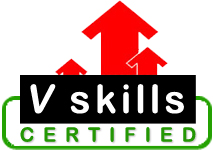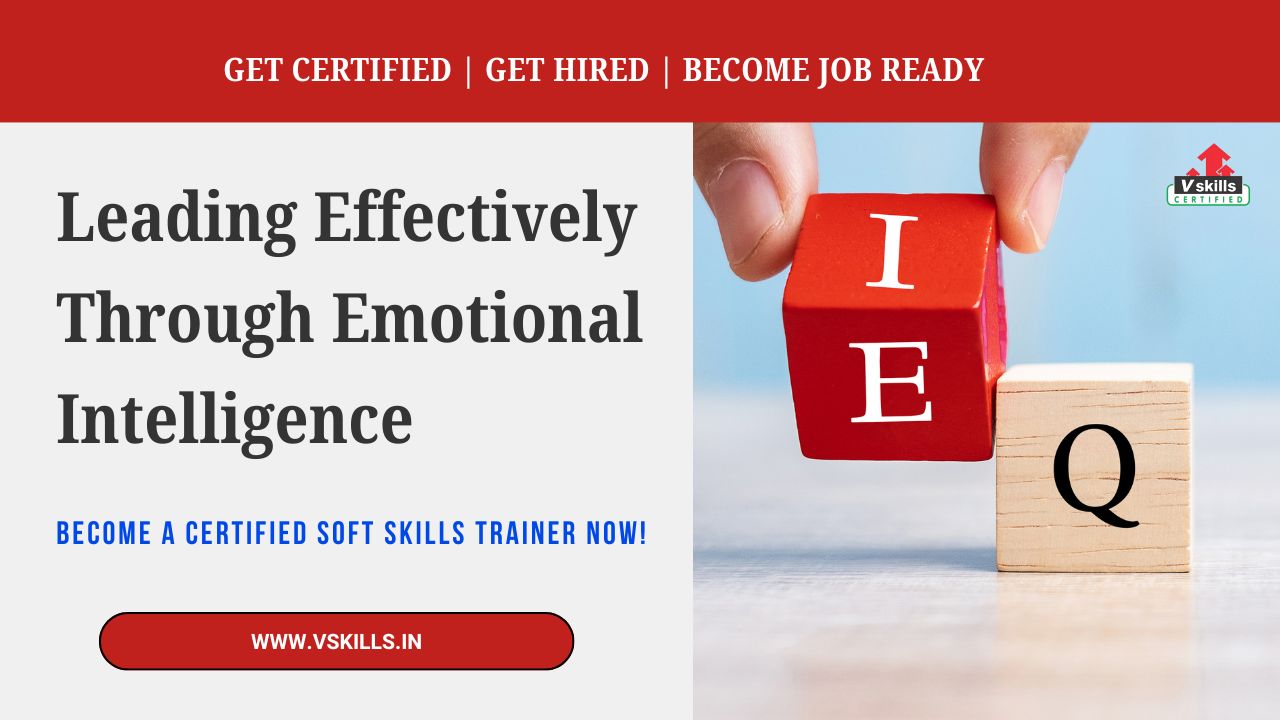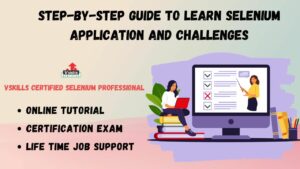“Leadership Isn’t Just a Skillset. It’s a Mindset.” Ever wondered why some leaders can walk into a room and instantly inspire trust, while others, despite years of experience, struggle to connect? It’s not just charisma or competence. It’s emotional intelligence (EI), the often-overlooked superpower that quietly shapes how leaders build trust, navigate conflict, and inspire high-performing teams.
Let’s face it, Emotional Intelligence has been floating around in leadership talks and HR decks for years. It sounds good in theory, but for many, it still feels like a soft-skill slogan—a “nice to have,” not a “need to have.” But here’s the reality: Emotional Intelligence (EI) is no longer optional in leadership—it’s essential. And in today’s fast-paced, hyper-connected, and often unpredictable work environment, it’s gaining serious traction for all the right reasons.
What exactly is Emotional Intelligence (EI)?
At its core, emotional intelligence is the ability to:
- Recognize and manage your own emotions
- Understand and influence the emotions of others
- Navigate social complexities with empathy and intention
It’s not about being “emotional.” It’s about being emotionally aware and strategically responsive, especially when the pressure’s on, tensions run high, or uncertainty clouds the room.
Why Emotional Intelligence (EI) is Gaining Momentum?
The modern workplace is undergoing a massive transformation. Hybrid teams, rapid change, cultural diversity, mental health awareness, and heightened employee expectations are redefining what it means to lead well. Old-school leadership—driven by authority, hierarchy, and control—is giving way to something far more human: leadership rooted in trust, empathy, adaptability, and connection.
And this is where EI shines.
More leaders and organizations are realizing that technical skills alone won’t build loyalty, drive engagement, or foster innovation. The leaders who stand out today—and stay relevant tomorrow—are the ones who lead with self-awareness, emotional agility, and people-first thinking. In fact, studies consistently show that emotionally intelligent leaders are better at:
- Navigating conflict without escalation
- Inspiring teams through change
- Creating psychologically safe environments
- Making balanced, thoughtful decisions under pressure
This Isn’t Fluff—It’s a Business Imperative
Far from being feel-good fluff, EI is now tied directly to business outcomes. Research by Harvard Business Review, World Economic Forum, and TalentSmart all point to higher productivity, lower turnover, stronger team performance, and better leadership ratings in environments where EI is embraced. Simply put, when leaders understand emotions, they understand people. And when they understand people, they lead better.
In this blog, we’ll break down what emotionally intelligent leadership really looks like, why it’s become a non-negotiable in today’s workplace, and how you can develop it starting today.
The Real Difference Between Managing and Leading
Anyone can delegate tasks or set KPIs. But great leadership goes far beyond that. It requires building trust, resolving conflict, motivating people during setbacks, and communicating vision in a way that resonates, not just informs.
That’s not about intellect—it’s about emotional skill.
In fact, many leadership failures today aren’t due to a lack of knowledge or expertise—they stem from low emotional awareness, poor listening, reactive decision-making, or an inability to empathize with the team.
Think about the leaders you admire most. Chances are they’re not just brilliant thinkers; they’re also:
- Calm under pressure
- Approachable and inspiring
- Authentic and empathetic
- Great listeners and communicators
Those aren’t random traits. They are hallmarks of emotional intelligence.
Daniel Goleman’s Five Components of Emotional Intelligence
Psychologist Daniel Goleman, who brought EI into mainstream leadership thinking, outlines five key components that shape emotionally intelligent leadership:
1. Self-Awareness
This is the foundation. It means understanding your strengths, weaknesses, triggers, and emotional patterns.
Leaders high in self-awareness don’t get blindsided by their own egos or emotions—they recognize when they’re frustrated, anxious, or excited, and they know how those emotions affect their decisions and interactions.
Example: A self-aware leader recognizes when a high-stakes meeting is triggering anxiety—and takes a moment to breathe, reset, and respond with clarity instead of defensiveness.
2. Self-Regulation
While self-awareness is about recognizing emotions, self-regulation is about managing them. It’s the ability to pause before reacting, to stay composed under stress, and to make thoughtful choices rather than emotional ones. In leadership, this shows up as grace under pressure. It’s about avoiding knee-jerk reactions and maintaining a steady presence that others can rely on.
Example: Instead of snapping at a team member for a mistake, a self-regulated leader chooses to address it constructively—turning a setback into a coaching moment.
3. Motivation
This isn’t about motivating others (that comes later). It’s about being driven by internal purpose—a desire to grow, improve, and achieve goals that matter beyond titles or paychecks. Emotionally intelligent leaders are resilient. They bounce back from challenges not just because they “have to,” but because they’re anchored in a deeper sense of meaning and personal drive.
Example: A motivated leader doesn’t retreat when faced with failure—they learn, adapt, and move forward with renewed purpose.
4. Empathy
Arguably one of the most critical leadership traits today, empathy is the ability to see things from others’ perspectives, to understand their feelings, and to respond with compassion. Empathy builds trust. It creates space for openness, collaboration, and psychological safety. In diverse, remote, or cross-functional teams, empathy is what holds people together.
Example: An empathetic leader notices when a normally engaged employee seems withdrawn and takes the time to check in, offering support rather than criticism.
5. Social Skills
This refers to how we manage relationships. It includes communication, influence, conflict resolution, collaboration, and networking. Leaders with strong social skills don’t just “talk well”—they connect. They rally people around ideas, facilitate meaningful conversations, and resolve tensions without drama.
Example: A socially skilled leader knows how to align stakeholders, listen actively, and deliver tough feedback in a way that’s clear yet respectful.
These Aren’t Soft Skills—They’re Power Skills
In a world driven by automation, data, and constant change, emotional intelligence gives leaders an irreplaceable edge. These aren’t “nice-to-have” qualities—they’re the backbone of modern leadership. Without EI, decision-making suffers. Teams become disengaged. Innovation stalls. Trust breaks.
With EI, leaders create cultures where people thrive, challenges are met with resilience, and growth becomes sustainable.
So, the question isn’t “Should I develop emotional intelligence?”
It’s “Can I afford not to?”
Why Emotional Intelligence Separates Great Leaders from Good Ones
You have probably heard the saying, “People don’t leave companies—they leave managers.” And it holds true across industries, geographies, and generations. Employees don’t just want someone who can approve budgets or assign tasks. They want a leader who “gets it”—someone who listens, understands, and leads with empathy. Someone who doesn’t just walk into a meeting with an agenda, but with awareness. That’s where emotional intelligence becomes a game-changer.
It’s the difference between managing outputs and inspiring people. Between telling others what to do—and making them feel seen, heard, and valued while doing it.
Emotional Intelligence is Not Just About Being “Nice”
Let’s be clear: emotional intelligence isn’t about being soft or avoiding difficult conversations. It’s about having the clarity and control to handle them better. It’s about leading with presence, not pressure.
- Great leaders don’t just react—they respond.
- They don’t command—they connect.
- They don’t avoid conflict—they de-escalate it thoughtfully.
And these are not abstract ideas. The numbers back it up.
According to TalentSmart, 90% of top performers score high in emotional intelligence.
Another study by Harvard Business Review found that leaders with high EI drive stronger team engagement, lower turnover, and better decision-making outcomes.
Emotionally intelligent leaders foster psychological safety—a culture where people aren’t afraid to speak up, take risks, or challenge ideas. And in today’s innovation-driven world, that’s invaluable.
What Emotionally Intelligent Leaders Do Differently
Let’s break it down. Here’s how EI shows up in real leadership moments:
- Diffuse Conflict Before It Escalates: They sense rising tensions before they boil over. Instead of letting miscommunications fester, they address issues head-on—calmly, constructively, and without ego.
- Create Safe Spaces for Innovation: People won’t pitch bold ideas if they fear being dismissed or judged. EI leaders build trust through empathy and open communication, making their teams feel safe to experiment and fail forward.
- Read the Room—and Adapt Whether it’s a boardroom full of tension or a Zoom call filled with awkward silence, emotionally intelligent leaders pick up on unspoken cues. They don’t bulldoze through the agenda—they pause, pivot, and adjust their approach based on emotional context.
- Lead with Awareness, Not Autopilot: They take the time to self-reflect. They know when their energy is off and when to take a step back before responding. They’re not reactive—they’re intentional.
Great leadership begins with emotional awareness. And that awareness opens the door to trust, loyalty, and high performance. Because let’s face it—strategy matters. Vision matters. But people make or break it all. And when people feel understood, respected, and supported, they bring their best selves to work. Every day.
What are the traits of Emotionally Intelligent Leaders?
Here’s the truth most leadership books don’t tell you—no one is born with perfect emotional intelligence. It’s not some mystical trait reserved for extroverts, empaths, or charismatic CEOs. It’s a learnable, practical skillset that can be built and strengthened over time. In fact, many of the world’s most respected leaders weren’t always naturally “emotionally intelligent.” They learned through feedback, failure, and reflection. They trained themselves to be more present, more intentional, and more people-savvy.
Whether you’re managing a team, leading a project, or simply looking to become a more effective communicator, these traits of emotionally intelligent leaders are completely within reach. Let’s break them down—and more importantly, let’s explore how you can start developing them.
1. Pause Before Reacting
Emotionally intelligent leaders don’t shoot from the hip. When tensions rise, when stakes are high, or when criticism hits hard—they pause, breathe, and respond with intention. This simple but powerful habit prevents rash decisions, angry emails, and knee-jerk reactions that often do more harm than good.
How to build it?
Practice “the power of the pause.” When something triggers you, count to five. Ask yourself, “What’s the most constructive response here?” That space between stimulus and response is where EI lives.
2. Listen to Understand—Not to Reply
There’s listening, and then there’s really listening—with curiosity, without interrupting, and without formulating your response while the other person is still talking. Emotionally intelligent leaders are tuned in. They are not just looking for a gap in conversation to jump in—they’re trying to understand perspectives, motivations, and concerns.
How to build it?
Use active listening techniques like mirroring (“So what I hear you saying is…”), asking clarifying questions, and maintaining eye contact. Drop the need to “fix” or “respond” right away—just focus on getting it.
Adjust their Leadership Style Based on Team Dynamics
Not every team needs the same type of leadership. What works for a group of self-starters may not work for a team facing burnout. Emotionally intelligent leaders read the emotional climate and shift gears accordingly. They know when to push and when to support. When to lead from the front—and when to empower others to take the lead.
How to build it?
Regularly check in with your team—not just on progress, but on how they are feeling. Use those insights to adjust your tone, communication, and expectations. Flexibility isn’t weakness—it’s wisdom.
4. Handle Tough Feedback with Grace—And Give It Constructively
Feedback is the lifeblood of growth. But many leaders either avoid giving it (to preserve comfort) or deliver it poorly (which erodes trust). Emotionally intelligent leaders don’t shy away from feedback—they embrace it. And when they give it, they do so with empathy and clarity, focusing on behaviors and outcomes, not personal attacks.
How to build it?
When receiving feedback, resist defensiveness. Say, “Thank you, I’ll reflect on that.” When giving feedback, use the SBI model (Situation-Behavior-Impact) and keep the conversation balanced and forward-looking.
5. Stay Grounded—Even When Things Get Messy
Change, uncertainty, deadlines—leadership can feel like walking a tightrope in a storm. But emotionally intelligent leaders become the calm in the chaos. They don’t ignore pressure, they manage it. They model composure, which reassures their team and helps maintain morale even when challenges arise.
How to build it?
Develop stress regulation habits—journaling, mindfulness, breathing exercises, or simply taking short breaks to recalibrate. The more grounded you are, the more stable your leadership becomes.
The shift toward emotional intelligence starts with a choice:
- To be more self-aware.
- To lead with intention.
- To connect before you correct.
You don’t need to master all five traits overnight. Even working on one area—like pausing before you react or listening more deeply—can have a ripple effect on how people experience your leadership. Because at the end of the day, people don’t just remember what you said or did—they remember how you made them feel.
How to Build Your Emotional Intelligence as a Leader?
Let’s bust a myth right out of the gate: Emotional intelligence (EI) isn’t about being soft, overly agreeable, or emotionally vulnerable all the time. It’s about being emotionally aware, socially attuned, and mentally agile enough to lead with clarity and connection—even in chaos. Building EI isn’t about overhauling who you are or completely reinventing your leadership style. It’s about small, consistent shifts in mindset and behavior that lead to deeper trust, stronger teams, and better outcomes.
Let’s walk through what that looks like in action.
Step 1 – Reflect Daily: Understand Your Emotional Patterns
Here’s a powerful truth: You can’t manage what you don’t notice.
Emotionally intelligent leaders make time to reflect. Not just on strategy or results—but on their emotional responses and the impact they had on others.
- Did something trigger frustration?
- Were you too quick to judge in that meeting?
- Did you dismiss someone’s idea without realizing it?
At the end of your day, take five minutes to ask yourself:
- What emotions did I experience today?
- What triggered them?
- How did I respond—and how might I handle it differently next time?
You’re not looking for perfection here—you’re building emotional self-awareness, which is the foundation of EI.
Step 2 – Practice Empathy: Don’t Jump to Fix—Lean In to Feel
Empathy is often misunderstood. It’s not about solving people’s problems for them. It’s about connecting to their emotions before you offer a solution. When someone is overwhelmed, anxious, or disengaged, our instinct is often to jump in with advice or move on quickly. But emotionally intelligent leaders take a moment to ask:
“What’s going on for you right now?”
“How are you feeling about everything?”
That simple check-in—done with sincerity—can unlock trust faster than any team-building exercise.
Next time someone shares a struggle, resist the urge to fix it immediately. Instead, reflect back what you’re hearing:
“Sounds like that’s been really frustrating.”
“Thanks for opening up about that—how can I support you?”
Empathy isn’t about rescuing. It’s about relating.
Step 3 – Ask for Feedback: Make It Safe for People to Be Honest With You
This is where many leaders stumble. They want to grow, but they don’t always ask others how they’re doing as a leader. Emotionally intelligent leaders seek out feedback—not just during formal reviews, but in casual, real-time moments.
They ask questions like:
- “What’s something I could have done better in that meeting?”
- “Is there anything I’m missing from your perspective?”
- “How can I support your growth more effectively?”
Invite feedback from a few trusted colleagues or team members. Let them know you’re genuinely open—and mean it. Don’t defend. Don’t deflect. Just listen. Feedback is a mirror. Use it to see what others see. Over time, this vulnerability builds psychological safety—and the respect that comes with it.
Step 4 – Slow Down: Give Yourself Space to Respond, Not React
We live in a leadership culture that prizes speed. Fast decisions. Quick fixes. Rapid responses. But when it comes to emotionally intelligent leadership, slowing down is a superpower.
- It’s in the pause before you respond to a heated email.
- The breath you take before giving difficult feedback.
- The moment of silence you allow in a meeting before offering your opinion.
Emotionally intelligent leaders give themselves space to choose how they respond—not just if they respond.
Before your next tough conversation or high-stakes meeting, take a few moments to center yourself. Ask:
- What energy do I want to bring into this room?
- What outcome am I hoping for—not just tactically, but emotionally?
Even a 10-second pause can shift your tone, your language, and your impact.
Leadership Isn’t About Always Having the Answers
If you take just one thing away from this, let it be this:
Emotional intelligence isn’t about perfection—it’s about presence.
You don’t need to always say the right thing, know the perfect solution, or lead without fault. You simply need to create the kind of environment where others feel seen, heard, and safe to grow—because that’s what unlocks innovation, loyalty, and real team performance.
What Happens When Leaders Lead With Emotional Intelligence?
Imagine a high-pressure deadline is looming. The team is stressed. Instead of reacting with frustration or panic, the leader calmly acknowledges the pressure, validates the team’s concerns, offers support, and helps them focus on what matters.
That’s emotional intelligence at work.
- Leaders who lead this way create environments where people feel respected and supported.
- Teams led by emotionally intelligent leaders tend to be more engaged, recover more quickly from setbacks, and collaborate more effectively.
- Emotional intelligence builds trust. And when trust is present, performance follows naturally. It’s not about controlling emotions—it’s about understanding and guiding them for collective success.
Building an Emotionally Intelligent Culture Starts With You
Organizational culture doesn’t just happen—it’s shaped by the actions and attitudes of its leaders. If you want to foster an emotionally intelligent culture, it begins with how you show up every day.
This means weaving emotional intelligence into leadership development, creating space for honest feedback, and modeling self-awareness and vulnerability. When leaders set the tone, others take the cue. Culture spreads through behavior, not memos. If empathy, clarity, and emotional awareness are consistently modeled, they become part of how the organization works and how people lead at every level.
To build an emotionally intelligent culture, you must:
- Embed EI into leadership training. It’s not a “nice-to-have”—it’s core curriculum.
- Normalize feedback. Make it safe to speak up and healthy to grow from it.
- Lead with transparency and vulnerability. When leaders share honestly, others follow.
Because here’s the truth – Culture is caught, not just taught.
People take their emotional cues from leadership. And when empathy, self-awareness, and psychological safety are modeled from the top, they ripple across the entire organization.
Expert Corner: Lead With Heart, Win With Purpose
Emotional intelligence is not a trend—it’s a long-term leadership advantage. In a world where change is constant and human connection matters more than ever, the ability to lead with empathy, awareness, and intention is what sets great leaders apart.
Ask yourself: Am I just leading people, or am I truly connecting with them?
That question can change how you lead—and what kind of impact you leave behind. Emotional intelligence isn’t about being soft. It’s about being strong in the ways that matter most.



